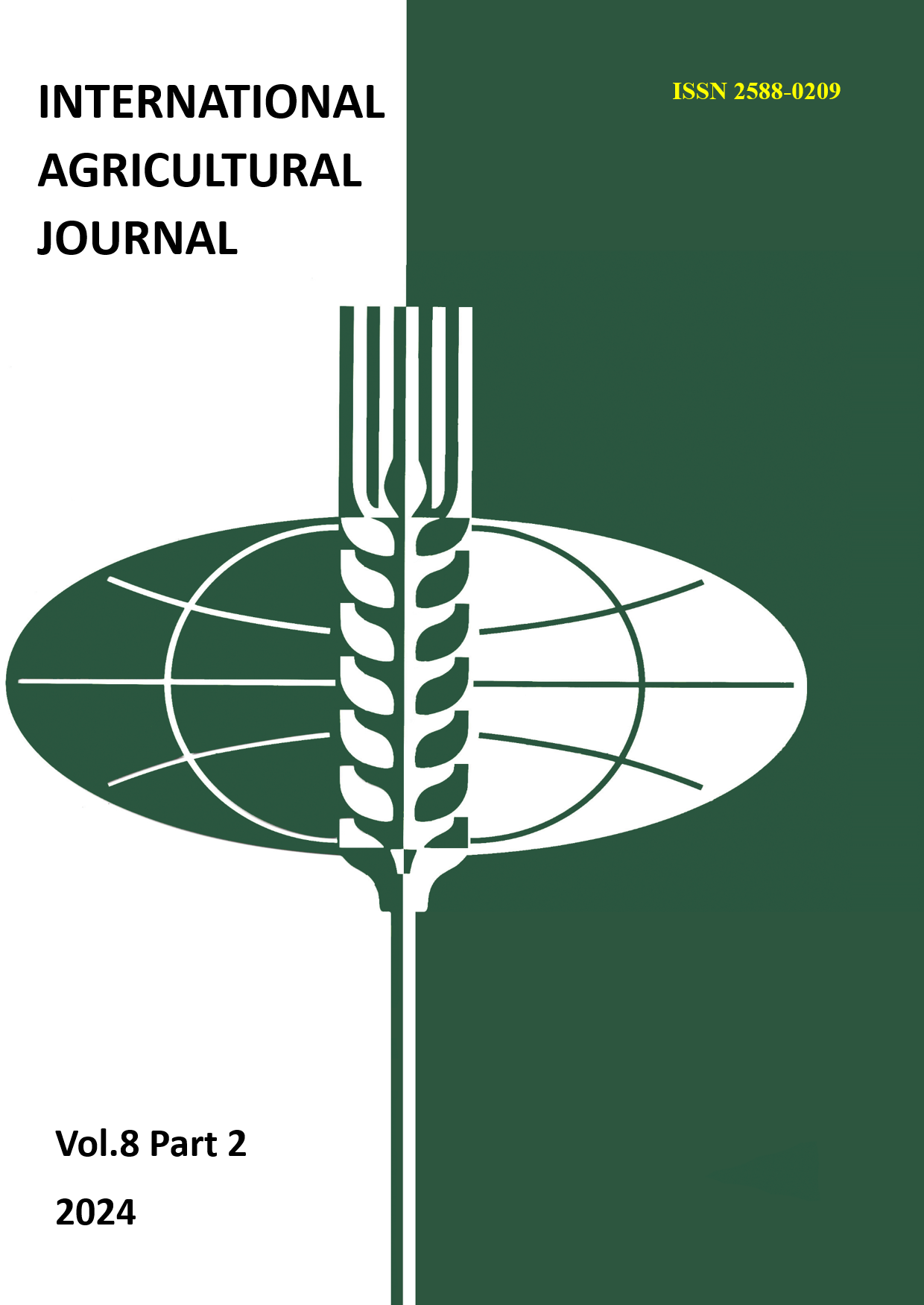STREAM POWING WITH SIMULTANEOUS LEVELING OF THE PLANT SURFACE
Main Article Content
Abstract
Currently, various agricultural crops are grown on mountain and foothill fields. It can be said that the cultivation technologies used on the plains are also used on the sown areas located on the slopes. As a result, every year the soil layers are turned over, the soil structure is disturbed and rapid soil erosion occurs. Preparation of the soil to obtain an optimal yield with minimal tillage, the main condition is considered to be the maintenance of a significant number of biological mass shells on the soil surface.
The challenge facing world agriculture is to save energy, land, moisture, manure, time and manual labor and ensure profitable production of high-yielding crops. For pre-spring tillage, it is necessary to choose such responsible operations that minimize the destruction of the soil structure and reduce the number of trips of agricultural machines across the field. Thus, care should be taken to ensure that a sufficient amount of plant residues is preserved on the soil surface. Field work should be started on time. Strip processing technology can be used not only against wind erosion, but also to prevent water erosion on irrigated lands with high slopes, as well as during heavy rains and snowmelt in mountains, foothills and plains with difficult terrain.
It should be noted that in order to prevent erosion, it is important first of all to carry out agrotechnical measures. That is, the main factor accelerating erosion is the annual overturning of the soil during plowing. Erosion can be prevented at the initial stage with minimal or zero tillage by softening the soil.
Article Details
References
2. Grishenko N.V. (2011). Combating soil erosion in Australia, Zh.Zemedelie, No. 8, Art. 61-63.
3. Collection of materials from the Lemken company, Alpen, Germany, 2019.
4. Kaufman L.C.Totten D.C.Development of the moldboard plow. (2012).Transactions of the ASAE. No. 1,pg 55-60.
5. Arina Mikhailova, (2014).zh. Agroinvestor, Moscow, 2, pp. 1-27
6.D.D. Buhler, (2014).Weed Management, Reference Module in Earth Systems and Environmental Sciences, Elsevier, 2014, ISBN 9780124095489, https://doi.org/10.1016/B978-0-12-409548-9.09118 (https://www sciencedirect.com/science/article/pii/B97801240954 89091181)
7. Bernhard Freyer, Pierre Ellssel, Jürgen K. Friedel, Kurt Möller, (2014).The contribution of organic farming systems to soil fertility-A systems perspective, Editor(s): Michael J. Goss, Margaret Oliver,Encyclopedia of Soils in the Environment (Second Edition),
8. Academic Press, 2023, pp. 135-145, ISBN 9780323951333, https://doi.org/10.1016/B978-0-12-822974-3.00240-8.
9. Alan Joseph Franzluebbers, (2021). - Applied aspects of soil carbon, Editor(s): Terry J. Gentry, Jeffry J. Fuhrmann, David A. Zuberer, Principles and Applications of Soil Microbiology (Third Edition), Elsevier, pp. 363-384, ISBN 9780128202029, https ://doi.org/ 10.1016/B978-0-12-820202-9.00014-9.
10. M.R. Carter, E. McKyes, (2005). CULTIVATION AND TILLAGE, Editor(s): Daniel Hillel, Encyclopedia of Soils in the Environment, Elsevier, pp. 356-361, ISBN 97801234 85304, https://doi.org/10.1016/B0-12-348530-4/00514-2.
11. Haciyev, R., Salmanova, K., Mammadov, G., U.T. Taghiyev. (2022). Application of intensive technologies for improved production processes in poultry farms./ Eastern-European Journal of Enterprise Technologies, 4 (1 (118)), (2022) pp.90–102. doi: https://doi.org/10.15587/1729-4061.2022.262999
12. R.M.Haciyev, M.Huseynova, U.T.Taghiyev, G.B. Mammadov, G. Allahverdiyeva. (2022).The study of the efficiency evaluation of the ventilation system of the poultry house in the summer droppings /EUREKA: Physics and Engineering, 5, 82-92. https: //doi.org/10.21303/2461-4262.2024.003248 https://journal.eu-jr.eu/engineering/issue/view/261

